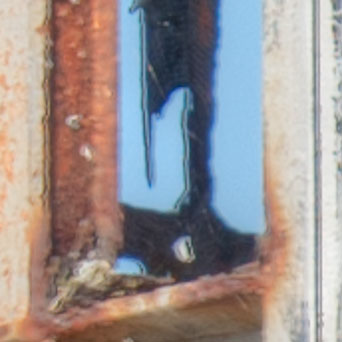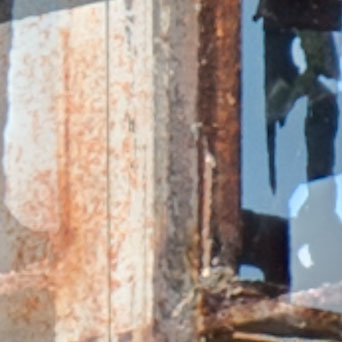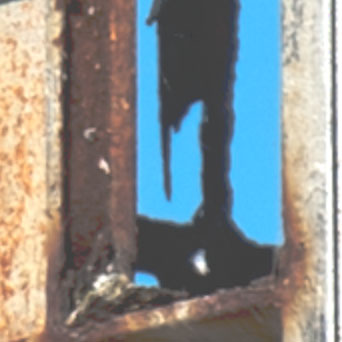This is the fifth in a series of articles abut passing images between Lightroom, Photoshop and various plugins:
- Are You Wasting Dynamic Range?
- The Lightroom “Edit in…” Problem
- RAW File Processing: Photomatix Pro vs. ACR/Lightroom
- HDR Tools Comparison
- Aligning Images for HDR
One step in the process of creating an HDR image is the alignment of the bracketed originals. If you’re working with a single RAW image (possibly extracting extended highlight or shadow detail using Klaus Hermann’s Five TIFFs method) this isn’t a problem as you’ll only have one image or the pixels in your extra images will be perfectly registered. If you’re using multiple exposures and a tripod, you won’t have perfectly aligned pixels, but they’ll be close. However, if you’re shooting bracketed exposures handheld, aligning your source images presents an interesting software challenge.
For this article is used two bracketed images (to keep things simple) that were shot handheld. The images below show how well four different applications were able to align the images.
- Photomatrix Pro (upper left) doesn’t appear to have a particularly good alignment algorithm, although we might be seeing some other artifact of that apps’ processing. It’s hard to tell
- LR/Enfuse (upper right) does such a bad job of aligning the two images (using default settings) the offset is almost the entire width of these 200% scale images.
- NIK’s HDR Efex Pro (lower right) looks a little better than Photomatix Pro but still not as good as Photoshop (next).
- From Lightroom, Merge to HDR Pro in Photoshop CS5 (lower left) appears to do the best job of aligning the images.
But while Photoshop may be the best tool for aligning images, we also know that it’s one of the weakest HDR applications for other reasons. How then can we take advantage of Photoshop’s alignment feature while using one of the other superior HDR apps?
For my more critical HDR images, my workflow now includes the following steps:
- Select all the images (including any extended-EV TIFFs) in Lightroom.
- In the Lightroom menu: Photo > Edit in > Open as Layers in Photoshop…
- In Photoshop, select all layers.
- From the Photoshop menu: Edit > Auto-Align Layers > Auto.
- Crop the image (all layers) to eliminate areas that aren’t present in all layers.
- Save each layer as a 16-bit ProPhoto RGB TIFF.
- Use these derivative TIFFs as the input to my HDR application of choice.
To see the results of this portion of the workflow, consider the following images, each produced in this way.
- Photomatix Pro (upper left) has been improved somewhat.
- LR/Enfuse (upper right) has gone from worst to best.
- HDR Efex Pro (lower left) has also improved a bit.
This portion of my workflow is fairly time consuming and I don’t use it all the time. But when I have an HDR image that’s critical, particularly when it was shot handheld or if I’m trying to achieve a particularly realistic (non-HDR-ish) look, this is what I do. And increasingly I’m using LR/Enfuse as my HDR tool of choice.
[Please use Google+ for comments: http://goo.gl/Retbw]







I think I might have an easier way for you.
Select all of your source images and Edit in… > Merge to HDR Pro in Photoshop. (Stay with me here…we will only be using PS for alignment and not for tone-mapping)
This will load all the layers, align them, and combine them into a 32-bit color space PRIOR to tone mapping.
Leave the mode in 32 bits and click OK on the HDR dialogue.
This will leave you with a 32 bit file open in Photoshop.
Save as OpenEXR format and then open the 32 bit EXR file in Photomatix for tone-mapping.
Wouldn’t this accomplish the same thing and with far less steps, extra files, etc? Or would there be data loss with this method. Most curious to know.
LikeLike
Hi, Jeff. The lower-right image in the first group of four shows the results of Merge to HDR Pro in Photoshop, so you’re right: the alignment is good. My concern would be the next step: the merging of the aligned images into the 32-bit HDR EXR file. I think that’s the most critical step in the entire HDR process. Tonemapping the EXR back to a 16-bit LDR image is something you can control in most apps, but I have a sense that the creation of the EXR is where PS is weak. Having said that, I have not tested it, but I should. Unfortunately, this test is a lot more subjective that testing for alignment, but I’ll give it a try. Thanks for posting this suggestion.
LikeLike
Thanks Jeff,
I am just starting HDR, and I have a few brackets I took that HDR Effex Pro were not aligning very well. This worked out great. Man, this HDR stuff is a labor of love.
LikeLike
Oops…I meant thanks Doug
LikeLike
So the bottom line is that we can’t align anything with Photoshop Elements or Light Room – we have to have the full photoshop….Very disappointing. I’m trying to use HDR using Photomatrix or Efex, but the alignment is terrible. So I was hoping to use LIghtroom or elements to align and then take it into one of the other programs. I just can’t afford to shell out the $$$ for photoshop.
LikeLike
If I may ruthmarie, get a tripod for your camera. A possible cheap solution to your problem. I never have a problem with photomatix when I use a tripod.
LikeLike
You can also use the excellent and free Panaroma-Tool Hugin for this purpose. Just export the aligned images in the last step “merge” without any stitching or exposure compensation.
LikeLike
Hmm is anyone else having problems with the pictures on this blog loading?
I’m trying to determine if its a problem on my end or if it’s
the blog. Any suggestions would be greatly appreciated.
LikeLike